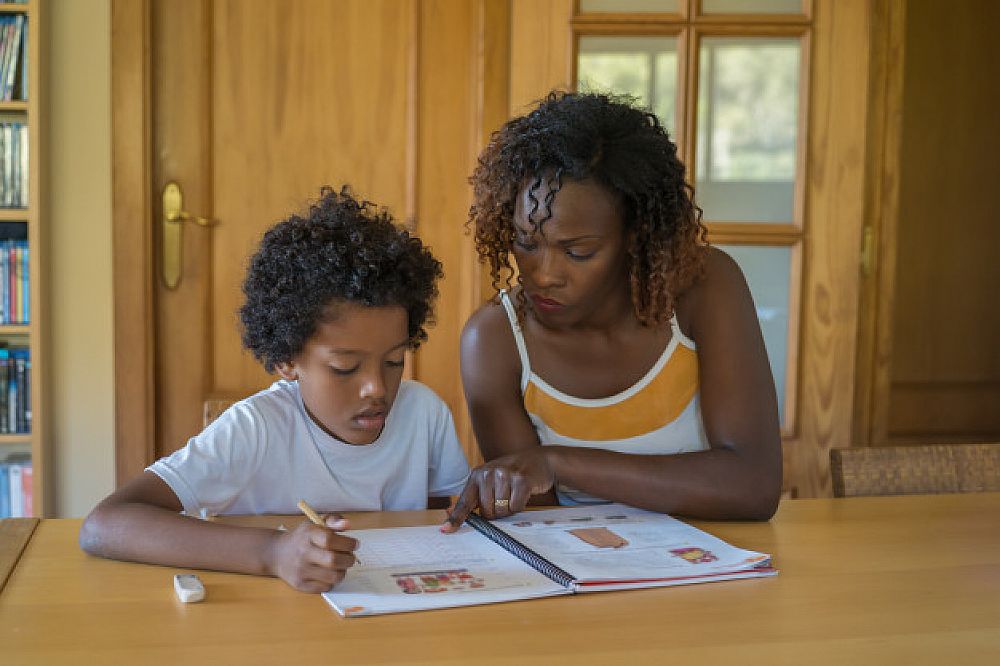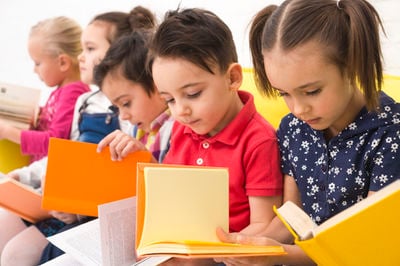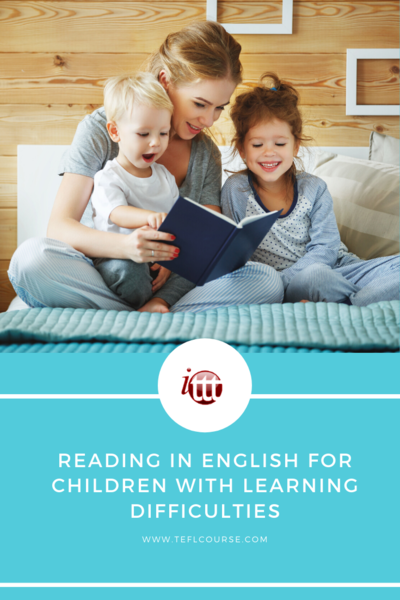Reading in English for Children With Learning Difficulties

Most of us take being able to read for granted. We seldom give a thought to how the process of learning to read began in our lives. I am sure most of us will not even recall the age we began to read. For many learners experiencing some form of learning difficulty, this may seem like a mountain with no peak. I am writing this essay based on my experience of having worked with learners ranging from those with various learning challenges to those with extreme learning disabilities. One thing I have learned over the years is that giving up on a child is never an option. One is forced to think creatively and innovatively to address the challenge.
Table of Contents
Do you want to teach English abroad? Take a TEFL course!
This post was written by our TEFL certification graduate Lynne C. Please note that this blog post might not necessarily represent the beliefs or opinions of ITTT.
Visual Learning
I believe in concrete and visual learning. In my experience, one of the most successful ways to assist these learners is through the creation of storyboards and personal books. There is never a doubt that everyone loves a good story, and if one can bring the story to life, this can be a game-changer. This approach will also support and improve comprehension. The way I apply a storyboard methodology is to request that the child or the child's caregiver begin by bringing a photograph of the child, his or her immediate family, and any pets that the child may have. This is part of the child's life-world and what he or she knows and loves. I get A3 sized cardboard and allow the child to paste the photographs on to the cardboard. The child is immediately interested in the material and will want to tell you about him or herself, his family or pets.

Also Read: "Helping ESL Students to Cope With Stress"
Pre-Taught Vocabulary
This is the vocabulary that I begin with. I write the names of the family and pets alongside or beneath the photographs and then get the child to sound out what I have written. Some of the children may have speech production challenges as well. It is known and accepted that a child's receptive level will always exceed his or her production of speech level. This is where phonology comes in. The child must listen to the sound or sounds of the words. This is also an opportunity to attempt to link the sounds of letters in words that assist the child in learning to read. To make the letters more concrete to the child, I use magnetic or wooden letters of the alphabet. The child is tasked to "spell out" the word that is on the storyboard in front of him or her. In this way, we can go beyond visual learning and bring in a three dimensional, concrete approach. For example, a photograph could be of "Mom." Mom may be wearing a red dress and blue shoes. This creates an opportunity to write and spell out the following words; Mom, red, dress, blue, shows and so on. This is only the beginning. The child can then be asked to practice writing the words him or herself as well as sound them out. I always suggest that the teacher or facilitator custom make flashcards of the words learned that day, and let these be taken home for re-enforcement purposes.
Also Read: Where do schools interview and hire English teachers in advance?
Storybuilding
From here, one can build on the story. The story must always be centered around the child's life-world and frame of reference. This is the best way to create enthusiasm and interest. The child or caregiver can be asked to bring photographs taken at home, on vacation, at a family member's birthday party. These photographs can be added to the storyboard to continue with the sound and word recognition process again. Within a few days, this piece of cardboard will be used up by the photographs and words. This is when I introduce a "Personal Book." Each learner gets his or her book. From singular words, we can introduce basic sentence frames with three to four keyword levels. For example, "Mommy is dancing." Drilling can also be used here. the learner can say the words or sentences a few times. This will also help to improve speech production.

Also Read: How to Teach ESL Classes of Mixed Ability
Benefits of the Approach
The wonderful thing about this approach is that the personal book will always be at the appropriate language, age and interest level for the learner. These personal books enable the teacher to ask the learner questions about the photographs and this also improves comprehension of the topic. By repeatedly reading the short sentences, pronunciation, and fluency also improve. The children must be encouraged to take their books home every week to show their parents and/or caregivers. The reason for this is that the children can show their parents what they have mastered and in so doing get much-needed encouragement and support. This results in the children feeling successful and proud.
The teacher can also let the learners create other books. The children and cut out pictures from old magazines and paste them in a book. Once again, the relevant vocabulary will be written in the book and sentences constructed around what is taking place in the picture. As the book progresses and the sentences become more complex; prediction and sequencing will also be taking place without the child/children realizing it. The personal book also allows the teacher to establish and deal with how the child or children are feeling. Questions can be asked around photographs, pictures from magazines or both.
Teacher's Responsibilities
It is always important that the teacher set the pace. It is very important to note that some learners may also struggle with handwriting and the formation of letters for numerous reasons. For this reason, the focus is on the word/s, pronunciation, being able to sound it out and read it aloud. It is not about handwriting. Developing and improving the handwriting of a child is a separate activity and must be treated as such.
This process and continue to grow and the material can become as challenging as the teacher wants it to be and "biography novels" can be aimed for in the future depending on the academic ability of the learner /s.
Do you want to teach English abroad? Take a TEFL course!
This i1s only one approach I have discussed in response to the title of the essay. For me, it has proven to be a perfect, good way to elicit interest in learning how to say words, spell them and read them. There are many others. When working with learners who have varying needs, including special needs, the teacher must see each child as a unique individual with his or her own needs. Experience has taught us that 'one shoe does not fit all!"
Apply now & get certified to teach english abroad!
Speak with an ITTT advisor today to put together your personal plan for teaching English abroad.
Send us an email or call us toll-free at 1-800-490-0531 to speak with an ITTT advisor today.
Related Articles:
- The Differences Between British English and American English, and How to Teach It
- Top 7 Spanish Speaking Countries for Teaching English Abroad
- Teaching ESL & Knowing Your Audience: Young Learners vs. Adults
- The How-To Guide For Americans To Teach English in Europe
- All the Documents You Will Need to Teach English Abroad
- Getting Student Placement Right - The Best Desk Arrangements for EFL Students




